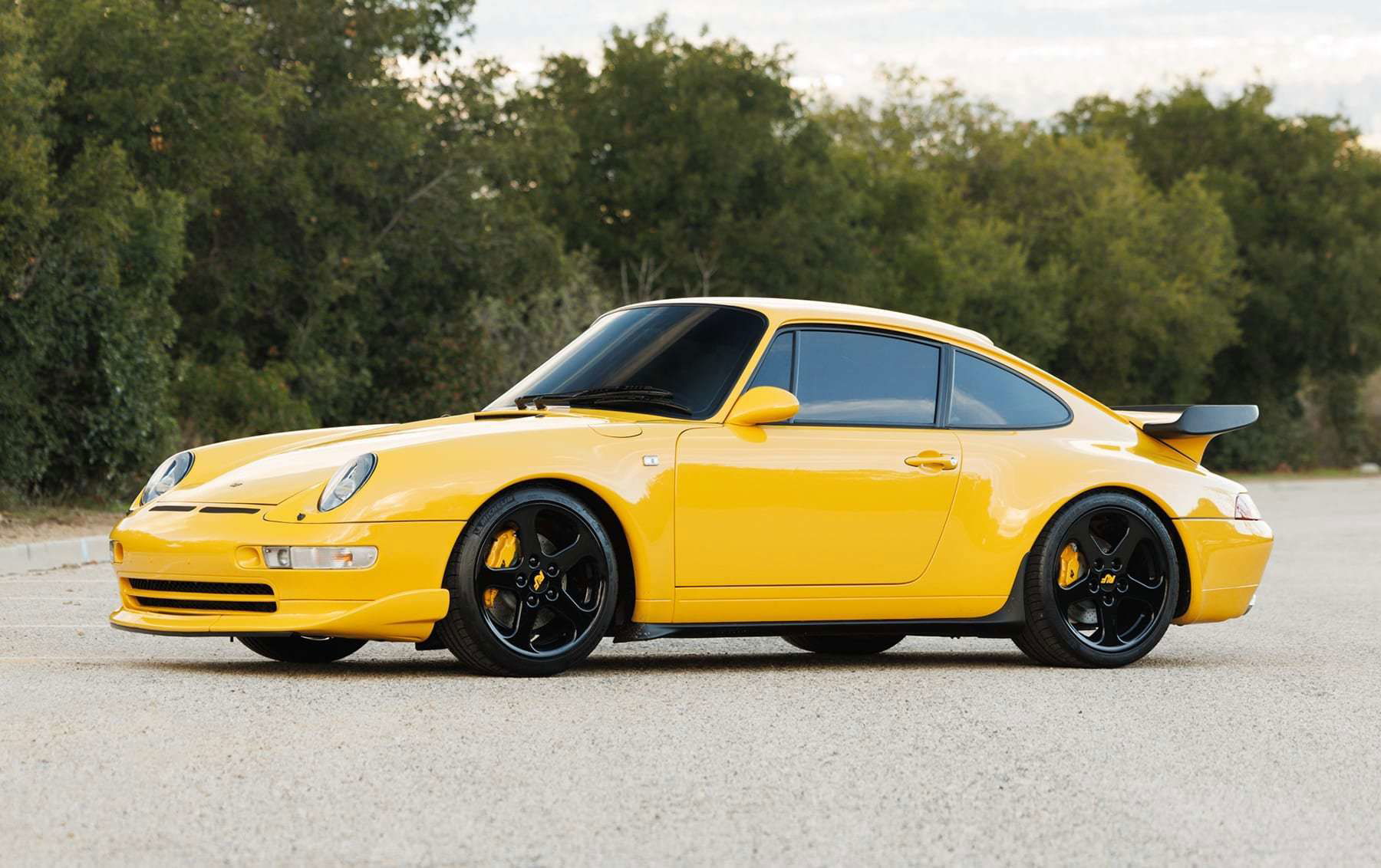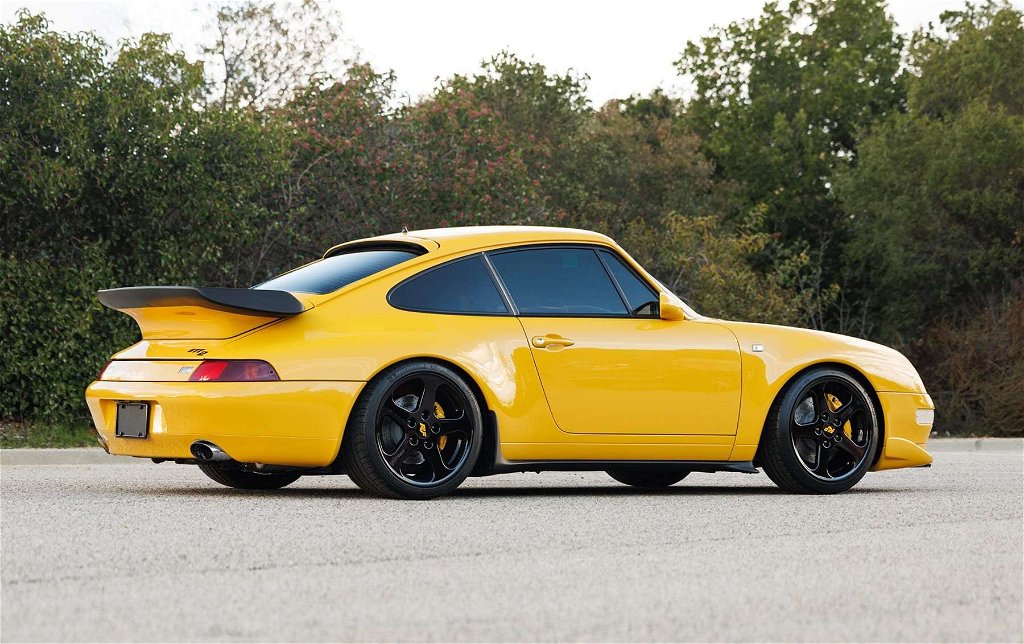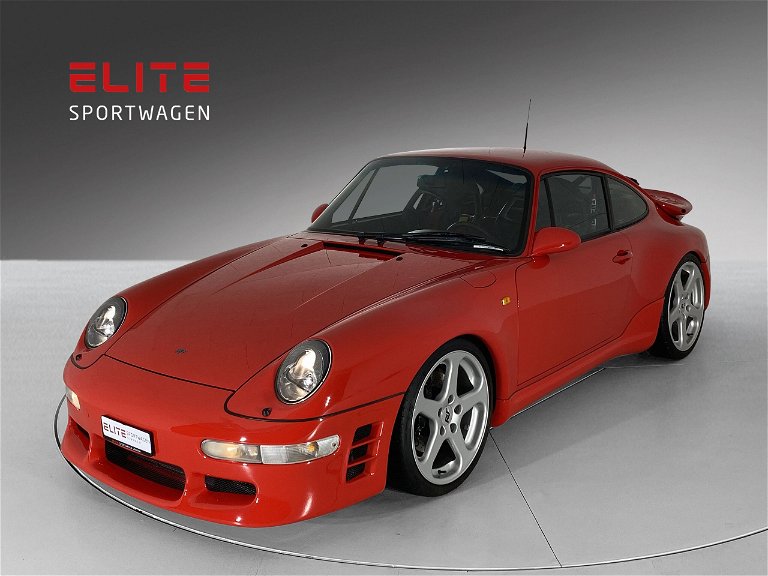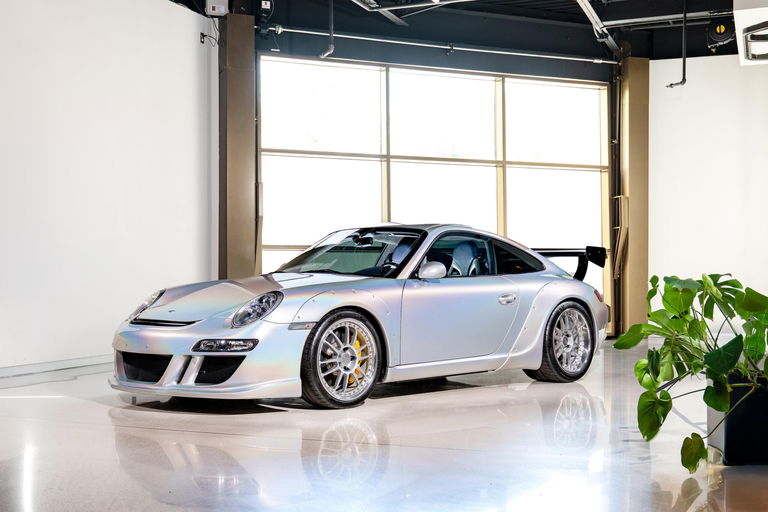The first RUF model to use the now famous W09 serial number was the 1983 BTR. Standing for Gruppe B Turbo RUF, the G series-based BTR was made available in a variety of body configurations. Appearing similar to the standard Porsche Turbo models with the primary exception of a new front spoiler, RUF honed every area affecting performance. Powered by a 3.4-liter turbocharged flat-six engine mated to a five-speed gearbox – when Porsche’s own 930 Turbo sported a four-speed – the BTR developed 374 hp at 6,000 rpm and 350 lbs./ ft. of torque. Achieving 0–60 mph in 4.7 seconds with a 190 mph top speed, a BTR was named “World’s Fastest Car” by Road & Track magazine in 1984 and put the supercar world on notice.
RUF introduced a spiritual successor to its first production car in 1994. Based on the 993-generation Porsche 911, each RUF-built BTR2 started as a narrow-body 911 Carrera 2 body-in-white supplied by Porsche. Subtly embellished in the style of its predecessor, the BTR2 was set apart by a reworked front bumper with larger air inlets and a pair of horizontal vent slits, a “whale tail” rear spoiler, sport mirrors, and 18” RUF five-spoke alloy wheels. On the inside, more supportive bucket seats and an integrated full roll cage were listed as optional extras.
RUF revised the gear ratios of the standard six-speed manual gearbox and added a limited-slip differential with a 60% lockup. The suspension was lowered, while stiffer anti-roll bars were installed. For more stopping power, the brakes were enlarged with 322 mm ventilated and drilled discs in the front, and only slightly smaller 299 mm discs in the rear.
The 3.6-liter naturally aspirated, air-cooled engine from the standard 993 Carrera 2 was retained but significantly upgraded. Topped by a large KKK K27 turbocharger, other modifications included an intercooler, sharper camshafts, new pistons, an auxiliary oil cooler, an optimized exhaust system, lowered compression ratio (from 11.3:1 to 8.4:1), and a reprogrammed Bosch DME Motronic engine management system. Delivering its power to the rear wheels only, the new engine developed 420 hp at a low 6,000 rpm and 435 lbs./ft. of torque at 4,800 rpm. Accelerating from 0–60 mph in a scant 4.1 seconds with a 191 mph top speed, the BTR2 eclipsed the performance of Porsche’s own four-wheel-drive, twin-turbocharged 993 Turbo.
Available as a coupe or cabriolet, approximately 10 BTR2 examples are believed to have been constructed by the RUF factory, along with several conversions of existing Porsche cars.
Finished in the striking combination of Speed Yellow over a black leather interior with contrasting yellow stitching, this factory-built BTR2 was the first production example completed on a 993 chassis, according to the accompanying RUF Zertifikat. Delivered new to a VIP customer in Japan in 1998 and specified with bucket seats and a lightweight interior package – in addition to signature components such as a RUF shifter, steering wheel, pedals, and green-hued instrumentation – this BTR2 later made a stopover in the UK before being purchased circa 2017 by Andy Cohen of Beverly Hills, California.
The founder of the well-known Beverly Hills Motoring Accessories company, Mr. Cohen returned the BTR2 to RUF’s workshop in Pfaffenhausen, Germany, for attention before exporting it to the US. According to an invoice on file stating a cost of €23,849, work performed by RUF in mid-2017 included converting the BTR2 to US specification and an engine service. The BTR2 would pass through one private California-based collection before being acquired by its current owner. Showing less than 26,000 miles at the time of cataloguing, this rare BTR2 presents in pristine, show-quality condition throughout and is accompanied by books, tools, jack, air compressor, original delivery accessories, service invoices, RUF Zertifikat, and additional documentation.
Although the silhouette is a familiar one, this highly collectible and truly uncommon RUF BTR2 offers thrilling, old-school turbo performance that will put many more recently produced supercars to shame.













